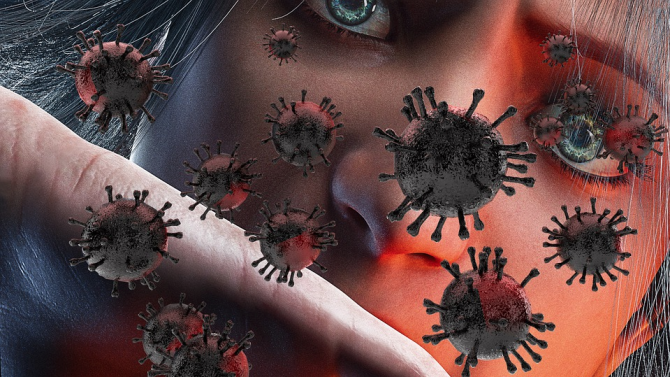-
04 август 2020 14:25
- 134248
- 56

Ли-Мен Ян е китайска вирусоложка, която доби световна популярност преди няколко седмици, когато успя да избяга от Китай и да се установи в Съединените щати.
Само преди няколко часа Ли-Мен Ян направи ексклузивно изявление пред световната общност, в което заяви, че настоящият коронавирус е бил сътворен във военна лаборатория в Китай и всичко, което твърдят в Пекин, е абсолютна лъжа.
По думите ѝ китайското правителство се е опитало да стори всичко възможно, за да ѝ попречи да разпространи информация за вируса и по този начин да спаси множество животи.
Тя сподели още, че към края на 2019 г. прекият ѝ началник ѝ заръчал да направи тайно разследване във връзка с естеството на вируса.
Започвайки да изучава патогена, Ли-Мен Ян е забелязала определени особености във вируса, които ѝ подсказали, че е бил създаден в лабораторни условия, а обясненията на китайското правителство, че COVID-19 е плъзнал от пазара в Ухан е просто измислена "сцена от сюжета".

Последвайте канала на

Повече за Коронавирус

- най-ново: Вижте последните новини
- лесни стъпки: Как да се предпазим?
- просто ръководство: Какви са симптомите?
Свързани новини

COVID-19 създава клетки убийци, които атакуват тумори
20 ноември 202415:04

Изследване откри кръвни маркери, свързани със сърдечносъдови проблеми при дълъг Ковид
31 октомври 202422:40

В Кипър започва ваксинационната кампания срещу Covid-19 и сезонния грип
16 октомври 202408:06

Ръст на случаите на грип и COVID-19 в Гърция
15 октомври 202416:05

С новите варианти ваксини срещу JN.1 на COVID-19 са ваксинирани 11 983 желаещи
10 октомври 202408:53

Проф. Кантарджиев: COVID ваксина трябва да поставят хора над 65 години и такива с имунни дефицити
09 октомври 202420:32

Продължава засиленият интерес към ваксинирането срещу COVID-19 в област Ямбол
09 октомври 202414:59
,fit(968:545))
Очаквайте: Божидар Искренов в "Гостът на Sportal.bg"
,fit(968:545))
Ливърпул разпердушини Тотнъм със суперфутбол и дръпна на върха в Премиър лийг преди Коледа
,fit(968:545))
Реал Мадрид изпрати триумфалната година с много красиви попадения и задмина Барселона
)
Борнемут прекърши Ман Юнайтед на "Олд Трафорд", "червените дяволи" с пореден исторически провал
,fit(968:545))
Ювентус най-после спря серията от равенства и се поздрави с юбилеен успех
,fit(968:545))
Победната серия на Челси приключи на негостоприемния "Гудисън Парк"
Коментари 56
Добави2021.05.12 | 12:24
2024.04.11 | 15:49
2022.08.06 | 06:57
2022.06.10 | 09:05
2021.04.04 | 16:36
2021.04.04 | 16:28
2021.04.04 | 16:16
2021.04.04 | 16:15
2021.04.04 | 15:58
2020.08.05 | 11:54
2020.10.22 | 06:04
2020.09.07 | 22:59
Добави коментар
Водещи новини

Откриха кучето на изчезналия 13-годишен Ники от Конаре
23 декември 202407:23

Как биха гласували българите, ако отново отидем на избори?
23 декември 202408:12

От ПП очакват "Обнови Европа" да изключи ДПС
23 декември 202407:33

СОС избира временен кмет на район "Искър"
23 декември 202408:54

Министърът на туризма: Няма решение за липсата на кадри по зимните курорти без вкарване на работна ръка от чужбина
23 декември 202409:20

Как да подготвим колата си за сняг, поледици и минусови температури?
23 декември 202408:14

БДЖ съобщи за отменени и закъснели влакове поради технически причини
23 декември 202408:43

Собственици на имот на бул. "Тодор Каблешков" блокираха пускането на най-новата част на булеварда
23 декември 202408:49

Мъж получи фиш за нарушение в София, без колата да е напускала Пловдив
23 декември 202407:53


2024.05.31 | 11:12